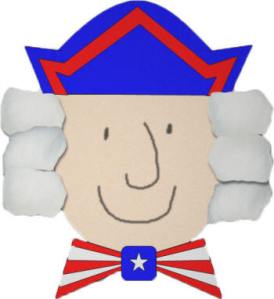 Sunscreen has been all over the news lately. It happens every summer, but this year there seem to be more warnings about the potential dangers of the ingredients found in many sunscreens. These stories have gone viral.
Sunscreen has been all over the news lately. It happens every summer, but this year there seem to be more warnings about the potential dangers of the ingredients found in many sunscreens. These stories have gone viral.
Consumer Reports warns against spray-on sunscreens for kids, claiming the spray-on type of sunscreen puts children at risk for asthma or allergy attacks. A Florida news source (and who knows sunscreen better than Floridians?) called Click Orlando reports:
Flip over your sunscreen. Take a look at the roughly 25 ingredients. The environmental working group or EWG — an organization that focuses on product safety — says some of these chemicals are cause for concern.
Like Oxybenzone. This chemical penetrates the skin, gets into the bloodstream and acts like estrogen in the body. It can also trigger allergic reactions. One study links oxybenzone to endometriosis.
And look out for Retinyl Palmitate which the EWG claims may speed development of skin tumors and lesions.
Those chemicals are why dermatologist, Dr. Kathleen Judge prefers her patients to use physical sunblocks. (http://www.clickorlando.com/news/ingredients-in-sunscreen-may-pose-risk/26842626)
Business Insider counters with:
“The short answer is that while people have raised legitimate questions about possible harmful effects of sunscreen, the harms that come from too much sun exposure are clear, known, and often deadly. There’s no contest.
In fact, researchers are aware of consumers’ simmering fears about sunscreen and have looked closely at the evidence on both sides. In a 2011 study on “sunscreen controversies,” a team of doctors from Memorial Sloan-Kettering did a thorough review of previous research in order to answer the three main questions people have about sunscreen:
- Does it protect against skin cancer? (Yes.)
- Does it cause Vitamin D deficiency? (No.)
- Are toxic chemicals in sunscreen harmful to human health? (No.)
…The researchers also take care not to dismiss concerns about some ingredients, like oxybenzone, in sunscreens. They discuss at length the growing body research around the effects of such compounds, which have been tied to changes in hormone activity, among other things.But while caution is not unfounded and there is still more work to be done, most evidence suggests that when used on human skin in appropriate amounts, these ingredients are safe.” (http://www.businessinsider.com/anti-sunscreen-warning-on-lululemons-bag-2014-7#ixzz376GPjSEG)
 At the end of the day, too much of a good thing (sunshine) is not great for your skin. Cancer.org suggests that clothing should be our first line of defense against the sun’s harmful rays. Though our image of desert dwellers is largely influenced my film and the media, people who live in the sun tend to cover up. Clothing protects us by absorbing or blocking much of the sun’s harmful ultraviolet (UV) rays.
At the end of the day, too much of a good thing (sunshine) is not great for your skin. Cancer.org suggests that clothing should be our first line of defense against the sun’s harmful rays. Though our image of desert dwellers is largely influenced my film and the media, people who live in the sun tend to cover up. Clothing protects us by absorbing or blocking much of the sun’s harmful ultraviolet (UV) rays.
“The more skin you cover, the better…” (http://www.skincancer.org/prevention/sun-protection/clothing) But how much better? Weave and fabric are obviously important. Some materials are better at absorbing UV that others; thicker, tighter weaves block more light. Color is potentially more important. “Dyes work by absorbing various frequencies of visible light, and many of them will absorb UV too. Of course, high light absorption at visible frequencies doesn’t necessarily imply high UV absorption, but as a general rule of thumb, white or lightly colored fabrics do tend to let more UV through than darker fabrics.” (http://outdoors.stackexchange.com/questions/1226/whats-the-upf-of-a-t-shirt-or-jeans)
Blue jeans have a sun protection factor (SPF) of 166, while heavy twill denim in white rates a 12. Your typical lightweight cotton t-shirt has an SPF of 4, dyed blue, that same shirt goes up to an 18.
While we are still on the fence about the dangers of sunscreen, we are pretty sure that color is good for summer sun protection. And the only reported side effects of wearing a dyed t-shirt in summer are looking and feeling cool.
Keep cool.
 One of the biggest keys to keeping your cool when it gets hot is getting enough sleep. This is where cotton comes into play – it is the ultimate fabric for a good night’s sleep.
One of the biggest keys to keeping your cool when it gets hot is getting enough sleep. This is where cotton comes into play – it is the ultimate fabric for a good night’s sleep.

 At the end of the day, too much of a good thing (sunshine) is not great for your skin. Cancer.org suggests that clothing should be our first line of defense against the sun’s harmful rays. Though our image of desert dwellers is largely influenced my film and the media, people who live in the sun tend to cover up. Clothing protects us by absorbing or blocking much of the sun’s harmful ultraviolet (UV) rays.
At the end of the day, too much of a good thing (sunshine) is not great for your skin. Cancer.org suggests that clothing should be our first line of defense against the sun’s harmful rays. Though our image of desert dwellers is largely influenced my film and the media, people who live in the sun tend to cover up. Clothing protects us by absorbing or blocking much of the sun’s harmful ultraviolet (UV) rays.



